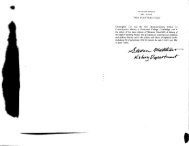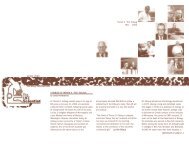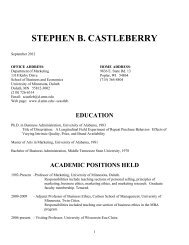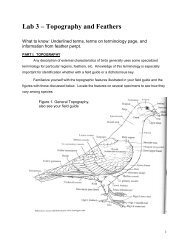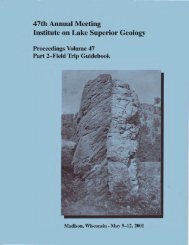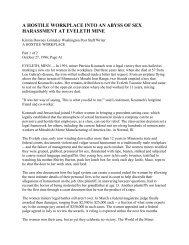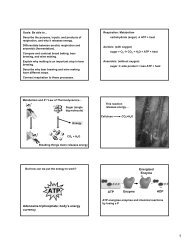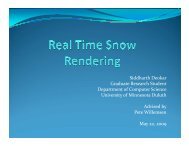Petrology and Cu-Ni-PGE Mineralization of the Bovine Igneous ...
Petrology and Cu-Ni-PGE Mineralization of the Bovine Igneous ...
Petrology and Cu-Ni-PGE Mineralization of the Bovine Igneous ...
Create successful ePaper yourself
Turn your PDF publications into a flip-book with our unique Google optimized e-Paper software.
asic rock types noted above <strong>and</strong> contains several horizons <strong>of</strong> disseminated <strong>and</strong> net-textured<br />
sulfide minerals. He notes that metal grades are low through most <strong>of</strong> <strong>the</strong> intrusion, typically<br />
less than .5 % <strong>Cu</strong> <strong>and</strong> <strong>Ni</strong>, <strong>and</strong> less than 350 ppb Pt <strong>and</strong> Pd (Fig. 6). One interval in <strong>the</strong> Little<br />
BIC intrusion <strong>and</strong> extending into <strong>the</strong> country rock has been found which contains significantly<br />
higher metal tenors comparable to <strong>the</strong> Eagle intrusion <strong>and</strong> <strong>the</strong> o<strong>the</strong>r mineralized ultramafic<br />
intrusions <strong>of</strong> <strong>the</strong> MCR (Rossell, 2008).<br />
Two o<strong>the</strong>r studies on <strong>the</strong> intrusion are currently in progress, but have not yet been fully<br />
published. A sulfur isotope study <strong>of</strong> <strong>the</strong> BIC by an undergraduate student under <strong>the</strong> direction<br />
<strong>of</strong> Dr. Ed Ripley at Indiana University is to be released in <strong>the</strong> summer <strong>of</strong> 2011. Initial findings<br />
<strong>of</strong> said study published in a 2010 GSA abstract indicated a δ 34 S range <strong>of</strong> -.41 to 1.23‰. This<br />
sulfur isotope range is consistent with sulfur derived directly from <strong>the</strong> mantle. However <strong>the</strong><br />
quantity <strong>of</strong> sulfur present in <strong>the</strong> BIC suggests that some additional sulfur must have been<br />
added. Schulz <strong>and</strong> <strong>Ni</strong>cholson (2009) presented <strong>the</strong> whole rock data recently collected from<br />
about eight samples from <strong>the</strong> BIC <strong>and</strong> compared <strong>the</strong> data to o<strong>the</strong>r early mafic-ultramafic MCR<br />
intrusions <strong>and</strong> to diabase dikes in <strong>the</strong> Baraga Basin to see if <strong>the</strong>re is a possible genetic link.<br />
Schulz <strong>and</strong> <strong>Ni</strong>cholson found that <strong>the</strong> trace element geochemistry <strong>of</strong> <strong>the</strong> BIC was very similar to<br />
those <strong>of</strong> high titanium alkali basalt dikes found nearby in <strong>the</strong> Baraga basin suggesting a<br />
possible petrogenetic link. The USGS scientists also collected a sample for U-Pb dating <strong>of</strong><br />
zircon or baddelyite but were unsuccessful in acquiring datable material.<br />
1.3 Objectives<br />
The main goals <strong>of</strong> this study are to evaluate <strong>the</strong> emplacement, crystallization, <strong>and</strong><br />
mineralization history <strong>of</strong> <strong>the</strong> BIC. The principle objectives that will be pursued to accomplish<br />
12




